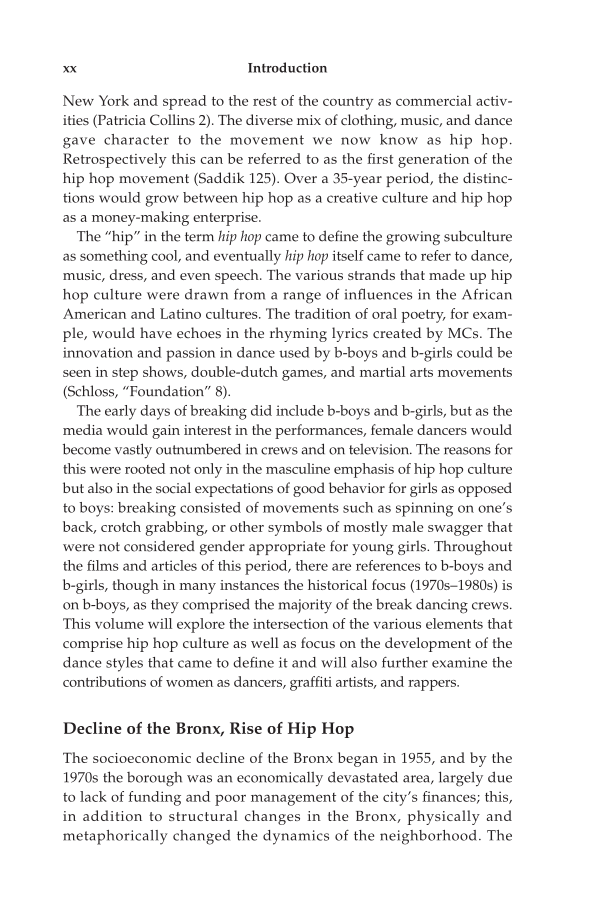New York and spread to the rest of the country as commercial activ- ities (Patricia Collins 2). The diverse mix of clothing, music, and dance gave character to the movement we now know as hip hop. Retrospectively this can be referred to as the first generation of the hip hop movement (Saddik 125). Over a 35-year period, the distinc- tions would grow between hip hop as a creative culture and hip hop as a money-making enterprise. The “hip” in the term hip hop came to define the growing subculture as something cool, and eventually hip hop itself came to refer to dance, music, dress, and even speech. The various strands that made up hip hop culture were drawn from a range of influences in the African American and Latino cultures. The tradition of oral poetry, for exam- ple, would have echoes in the rhyming lyrics created by MCs. The innovation and passion in dance used by b-boys and b-girls could be seen in step shows, double-dutch games, and martial arts movements (Schloss, “Foundation” 8). The early days of breaking did include b-boys and b-girls, but as the media would gain interest in the performances, female dancers would become vastly outnumbered in crews and on television. The reasons for this were rooted not only in the masculine emphasis of hip hop culture but also in the social expectations of good behavior for girls as opposed to boys: breaking consisted of movements such as spinning on one’s back, crotch grabbing, or other symbols of mostly male swagger that were not considered gender appropriate for young girls. Throughout the films and articles of this period, there are references to b-boys and b-girls, though in many instances the historical focus (1970s–1980s) is on b-boys, as they comprised the majority of the break dancing crews. This volume will explore the intersection of the various elements that comprise hip hop culture as well as focus on the development of the dance styles that came to define it and will also further examine the contributions of women as dancers, graffiti artists, and rappers. Decline of the Bronx, Rise of Hip Hop The socioeconomic decline of the Bronx began in 1955, and by the 1970s the borough was an economically devastated area, largely due to lack of funding and poor management of the city’s finances this, in addition to structural changes in the Bronx, physically and metaphorically changed the dynamics of the neighborhood. The xx Introduction
Document Details My Account Print multiple pages
Print
You have printed 0 times in the last 24 hours.
Your print count will reset on at .
You may print 0 more time(s) before then.
You may print a maximum of 0 pages at a time.

































































































































































